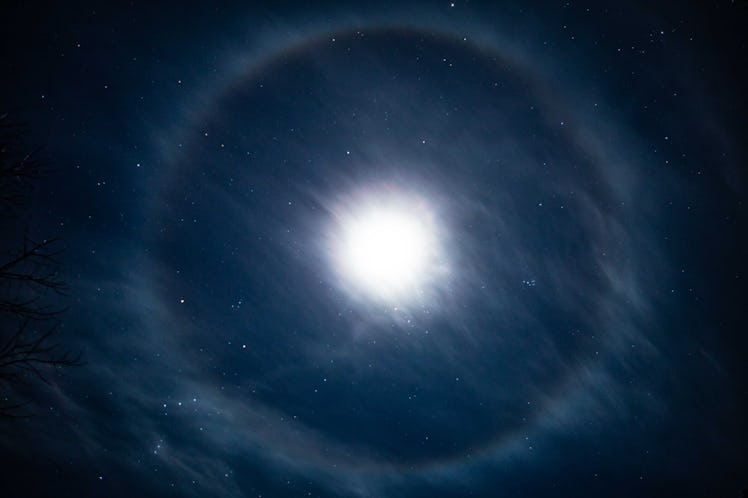Here’s When To See March's Full Worm Moon Brighten Our Skies
Here’s everything to know about the last full moon of winter.

We’re only a few weeks away until spring, leaving the cold, short days of winter behind us. For a lot of people, spring is the best season — it’s the return of sunlight and warmer weather, park days, and outdoor birthday parties. And for families full of amateur astronomers, it also means that warmer stargazing nights are on the horizon. But for now, the last Full Moon of the winter season is on the horizon — literally.
March’s Worm Moon stands out from the rest for many reasons, though — and not just because it signifies the end of colder days.
What is a Worm Moon?
According to The Farmer’s Almanac, the name of this month’s Full Moon comes from a mix of sources, including Native American cultures and European and Colonial American sources. It was theorized that the name came from the earthworms that tend to emerge during this season, but may have a different connection.
“In the 1760s, Captain Jonathan Carver visited the Naudowessie (Dakota) and other Native American tribes and wrote that the name Worm Moon refers to a different sort of ‘worm’—beetle larvae—which begin to emerge from the thawing bark of trees and other winter hideouts at this time,” The Farmer’s Almanac explains.
The March Full Moon also has many other names, even depending on when it rises. If the March Full Moon happens on or after March 21 — after the spring equinox — it’s called the Paschal Moon. Other names given to the March Full Moon include Sap Moon, Sugar Moon, Crow Moon, and Lenten Moon.
Something super interesting about the Worm Moon is that it’s the opposite of the Harvest Moon, which we see in early September. “For us in the Northern Hemisphere, the March full moon shows characteristics opposite those of a Harvest Moon. Meanwhile, in the Southern Hemisphere, this full moon has all the Harvest Moon characteristics,” EarthSky explains. Typically, the Harvest Moon rises earlier than the March full moon in the evenings, whereas the March full moon rises later in the evenings. So for Southern Hemisphere folks, their “Worm Moon” will look at lot more like our Harvest Moon. Weird!
When and how can I watch the Worm Moon?
EarthSky says the Worm Moon will come around dawn on March 7, 2023, and The Farmer’s Almanac says the moon will reach peak illumination at 7:42 a.m. ET on March 7.
However, you don’t have to wake up early to see the Full Moon. Taking time to look up at the sky on March 6 will give you and the kiddos a good glance at the Worm Moon — or you can try the evening on March 7, too.
And you might get an extra special show if it’s raining that evening. “If you have just a bit of rain on either of these nights, you may even get to spot a rare phenomenon called a moonbow,” The Farmer’s Almanac says.
“A moonbow is just like a solar rainbow but is created by moonlight (rather than sunlight) when it is refracted through water droplets in the air. Moonbows only happen when the full Moon is fairly low in the sky, so look for one in the hours after sunset when the sky is dark.”
Check out the Almanac’s Moonrise Calculator to find the best time to catch the moon in your area.
This article was originally published on